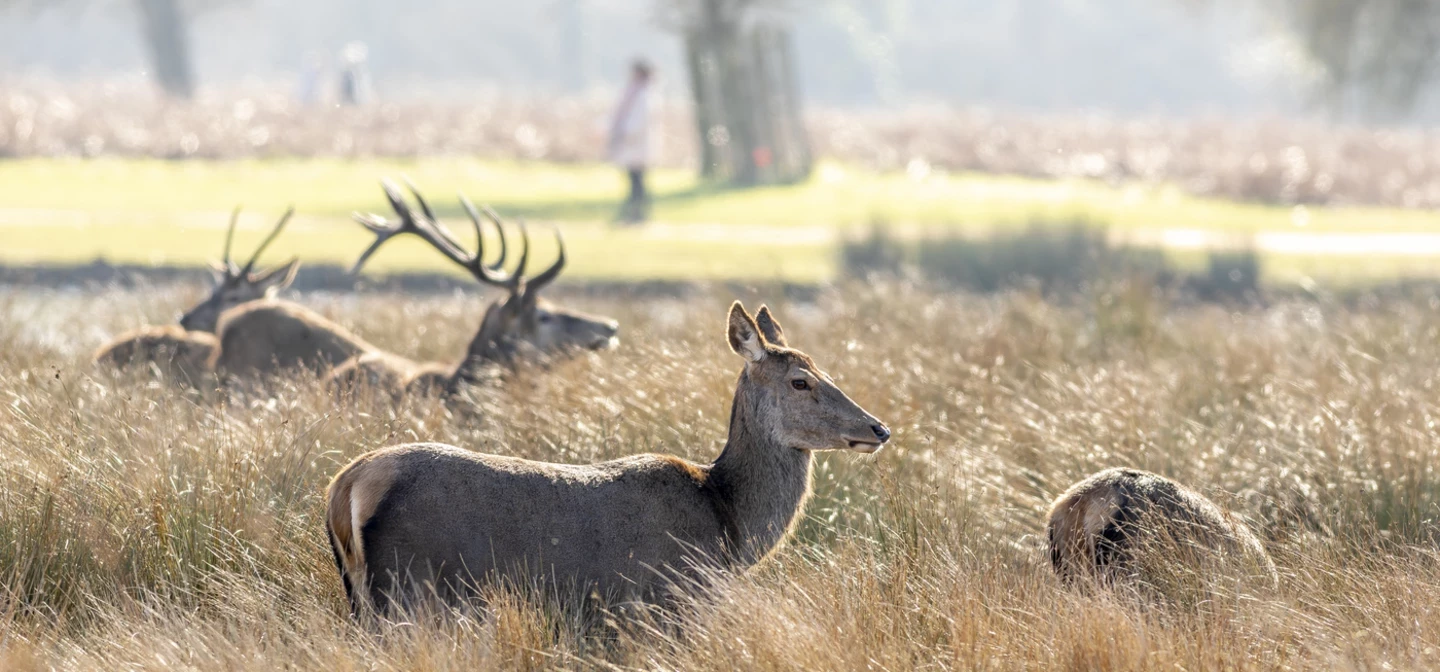
Wildlife
With over 4,000 species of animals, including more than 200 species of birds, the Royal Parks are teeming with wildlife.
The Royal Parks – some of the most biodiverse urban parks in the UK
Jackdaws in the tree canopies. Deer resting under ancient oaks. Pelicans perching on park benches. Tawny owls calling at dusk. Tiny voles nesting in the grass meadows. And there are over 4,700 species of invertebrates.
For many millions of visitors, it’s the chance to be experience wildlife in their natural setting that makes the Royal Parks so special. The 5,000 acres have an incredibly diverse range of habitats, which support a rich variety of wildlife. The parks are home and haven to some of our rarest or protected species, from stag beetles to bats, great crested newts, and grass snakes
Wildlife is woven into the history of many of the parks, and the herds of red and fallow deer which still roam free in Richmond Park and Bushy Park date back hundreds of years.
Much of our wildlife is hard to miss – whether it’s the jackdaws of Richmond, the famous pelicans of St. James’s Park or rival stags butting antlers in rutting season. But an even greater variety of species are often almost invisible to visitors – shy goldcrests hiding in the hedgerows, purple emperor butterflies in Richmond Park, or the thousands of invertebrate species and mini beasts at ground level, and below.
We’re here to help you discover the extraordinary biodiversity of wildlife in your Royal Parks.
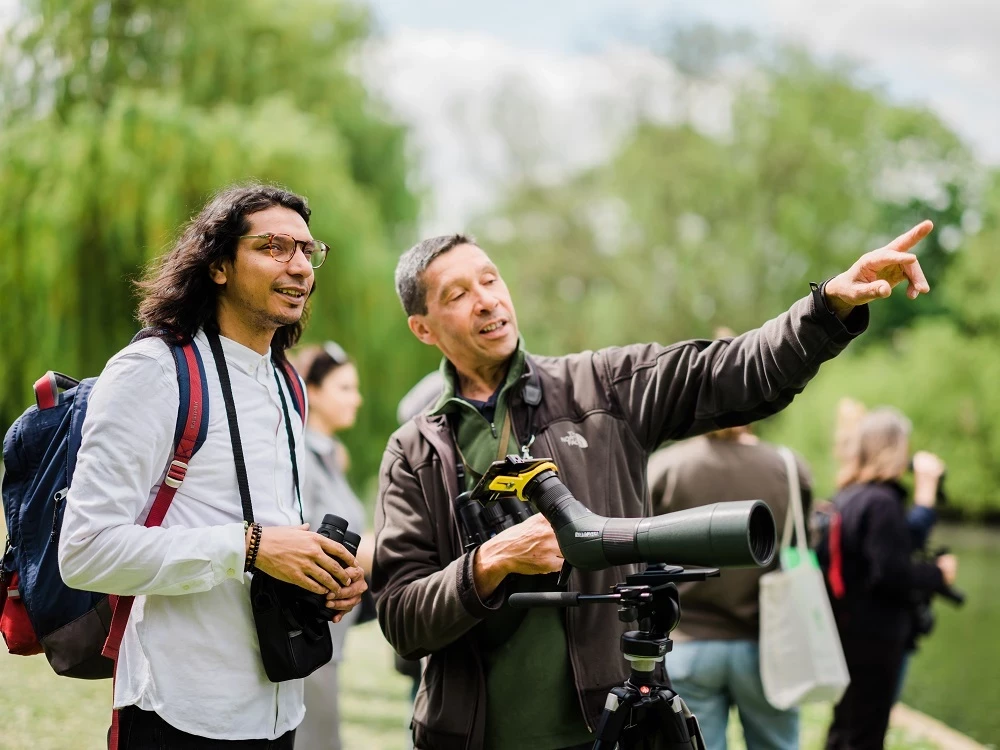
Birdlife in the Royal Parks
It’s often the birdlife that you notice – or hear – first when you’re in the parks. Stand for a moment, listen, and look up, and you can spot an incredible variety of birds. (There are over 200 species in The Regent’s Park alone). From sparrowhawks to owls, thrushes and all three native species of woodpeckers. And with over 40 ponds and lakes, wetlands and reedbeds, most of the parks are home to thousands of waterfowl and wading birds, including grey heron and rare kingfishers.
With more than 170,000 trees in the Royal Parks, woodland and trees are key habitats for birds. Which is why many of the parks have tawny owl populations, woodpeckers, even grey herons nesting up high. Over half the parks are grassland – rich food sources for native birds such as starlings, green woodpecker and mistle thrush, and the nationally rare skylark, which nests in the wide open grasslands of Richmond and Bushy Parks. Even dead and decaying wood is a wonderfully rich micro habitat for insects and beetles.
Why not join one of our regular, free birdwatching tours or community walks in many of the parks? Bird watching is a wonderful way to slow down and take in the natural world that’s all around us. It allows us to stand back and restore our sense of wellbeing.
We do ask that you don’t feed the birds – or any of the park wildlife – even though it can be tempting just to give the ducks the crust of a sandwich. Food, such as bread, upsets the delicate ecosystem in the water, and it’s much healthier for the birds to eat the food they’re evolved to eat. By not feeding them, you’ll be helping us to keep wildlife wild.
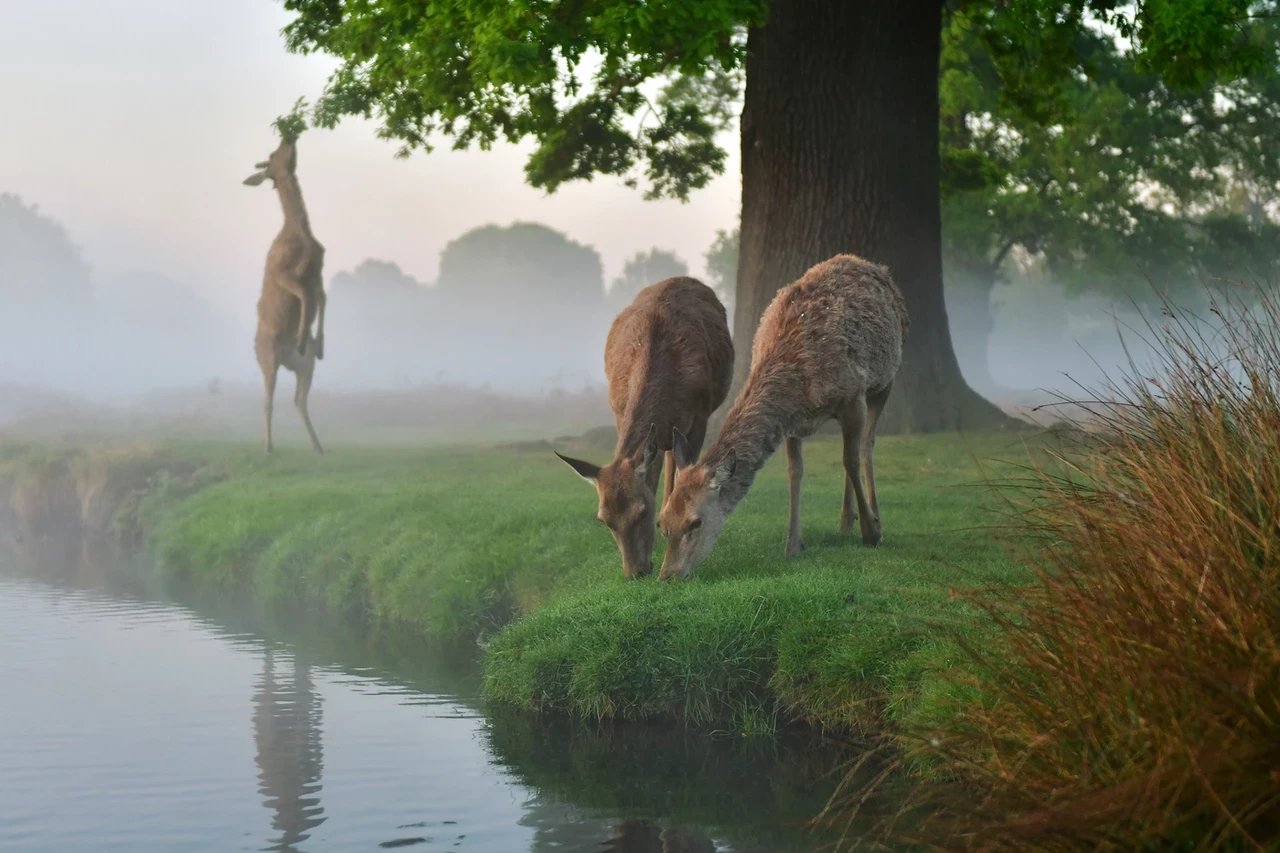
Animal life in the Royal Parks
The red and fallow deer roaming Richmond and Bushy Parks are some of our best-known animals and have been grazing the parks since the 1600s. Historically they’ve played a key role in shaping the landscape by browsing the trees and even now, they help us maintain the acid grassland habitat by grazing.
Hedgehogs are declining across the UK – and unfortunately are in The Regent’s Park. It’s the only breeding population in inner London, although numbers have dwindled in the last few years. This makes our conservation work on the hedgehog team even more important: tracking the animals and creating hibernation-friendly habitats for them.
Bats are quite a common sight at dusk in many of the parks, and we’re lucky enough to have many of the native species, including the common pipistrelle, soprano pipistrelle, noctule and Leisler’s Bat. You’ll see them flitting above the lakes in St. James’s Park and The Regent’s Park, as they hunt for insects.
And if you see grass blades twitching, it could well be one of the smaller mammals out foraging. The parks are home to bank voles and field mice, who play a key role dispersing seeds and are a food source for bigger animals, birds of prey including owls.
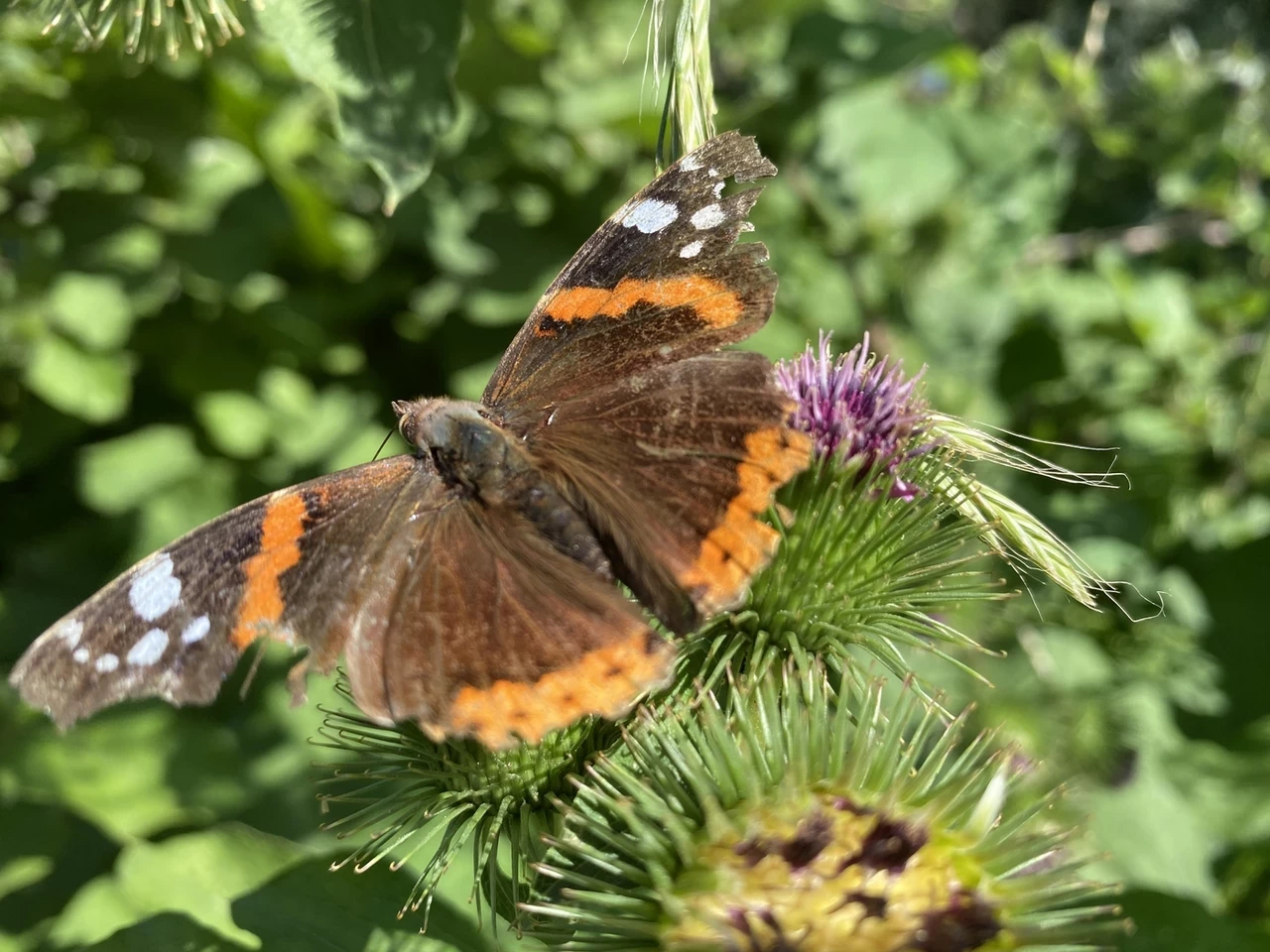
Tiny but mighty – the parks' invertebrates
Invertebrates are animals without a backbone such as insects, spiders, snails and earthworms. They pollinate flowers, control pest, create soil and recycle organic matter. And they’re a major food source for birds, and other wildlife. Without them, food chains and food webs would fall apart.
Life on earth depends on invertebrates. They make up over 95% of animals worldwide. In the Royal Parks, all the other wildlife relies on invertebrates for survival. They may be some of our smallest animals – but they’re most critical to the long-term health of the parks, and their biodiversity. There are over 4,700 species here.
These tiny creatures are so fundamental to the future of both our parks and our planet, we dedicated a five-year project, Mission: Invertebrate to conserving them and it’s a key part of Help Nature Thrive. Both projects are supported by players of People’s Postcode Lottery. We’ve already completed over 100 projects, including re-establishing pollinator-friendly meadows just half a mile from Oxford Street.
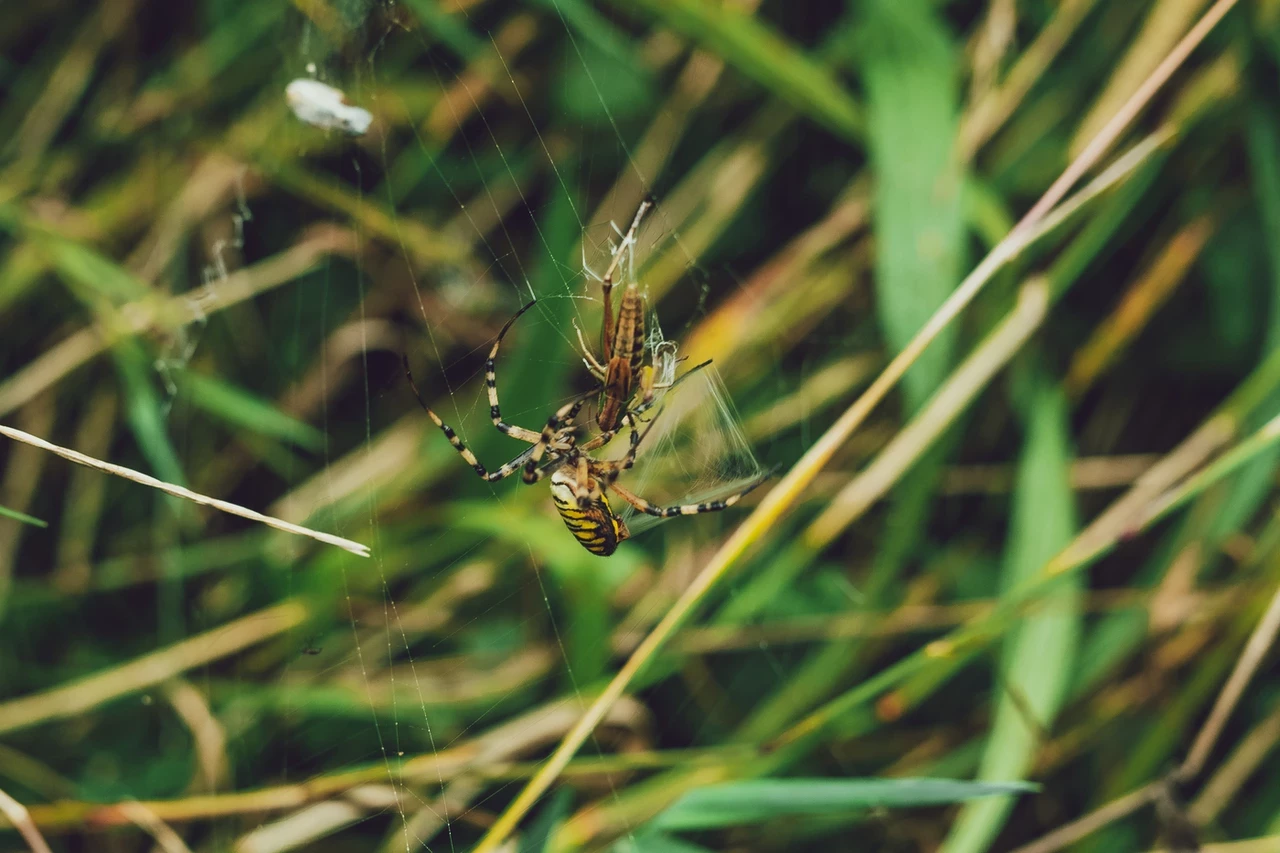
Amphibians in the Royal Parks
Wherever there’s a body of water, there’s a very good chance of finding amphibians such as frogs, toads, smooth newts and great crested newts. These extraordinary creatures can seek out water by their senses of smell and hearing, in order to breed.
Amphibians are extremely sensitive to changes in temperature or low rainfall, which makes them particularly vulnerable to climate change. We take great care to keep the park ponds, lakes and streams as clean as possible, and keep the water levels up. Monitoring and surveying our amphibian populations can give us early warnings of climate-related changes in the parks – and we can take action.
Frogs like to stay close to their breeding ponds, even when they aren’t breeding, and can hibernate in pond mud or under log piles. Toads often live further away from water and migrate back and forth during breeding and hibernation. You may surprise one under a rock!
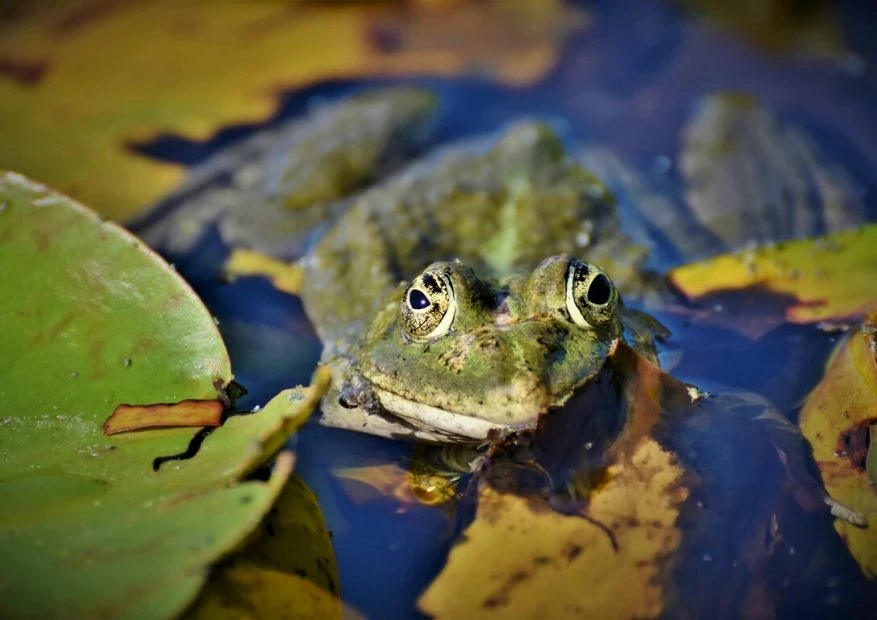
Snakes and lizards in the Royal Parks
These are some of the shyest wildlife in the Royal Parks. You’ll be lucky to spot one, but you may catch a glimpse of a lizard or grass snake basking in the sunshine on a path or rock. They’re hyper-sensitive to vibration, so they’ll ‘feel’ you coming – and probably dart for cover.
Fish in the Royal Parks
The larger ponds and watercourse in the parks host a variety of fish species, contributing to the biodiversity of these habitats. Fish species include tench, common rudd and European eel, as well as pike. These fish eat insects and vegetation and are food for birds and other predators. They use the plants and underwater structures in waterbodies for shelter and breeding, but can sometimes be seen in the shallow water.
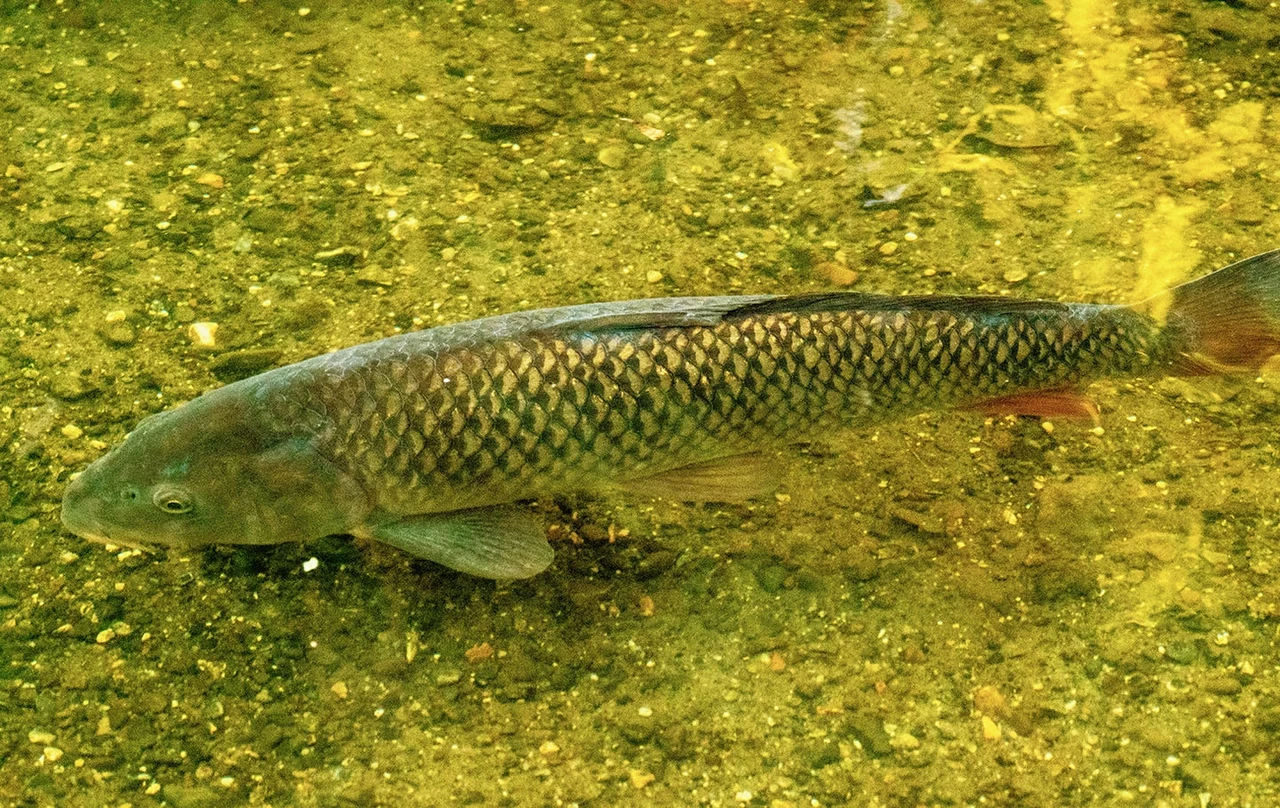
Get involved and discover more
We’re on a mission to convert even more people to invertebrates! We’d welcome your help as a volunteer or one of our Citizen Scientists. Thanks to the amazing conservation volunteers, we’re gathering data on butterflies and earthworms, even dung beetles! And you can learn more through our free drop in events like our Nature Roadshow, Discovery Days and pop-ups.
-
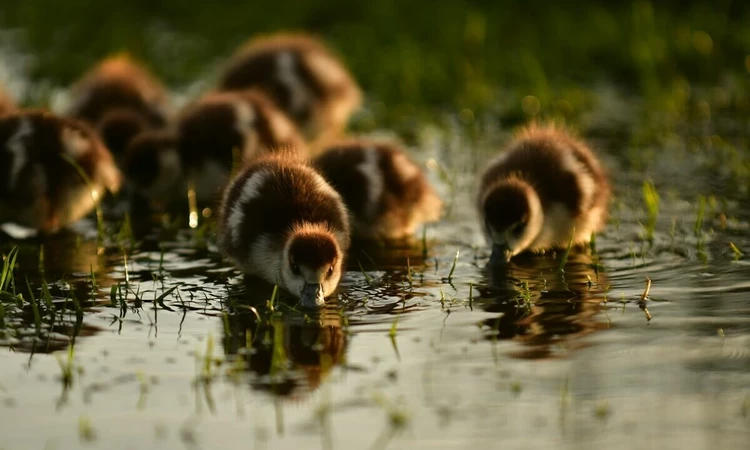
Keep wildlife wild
Find out about how you can help us keep wildlife wild, protecting the welfare of the wildlife that we share the parks with.
-
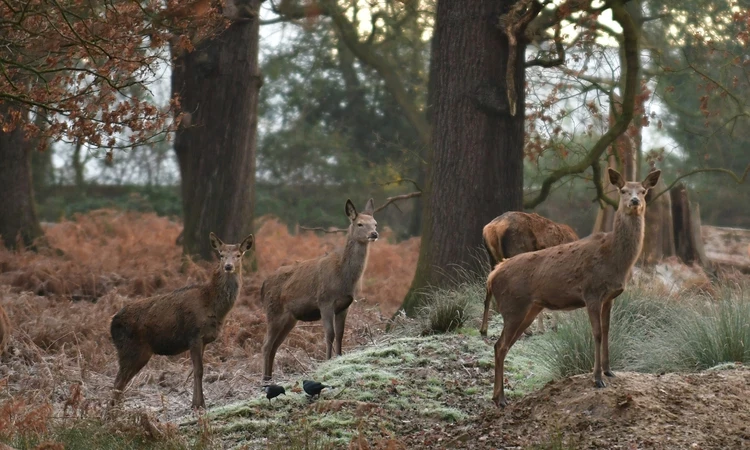
Deer in Richmond Park
Richmond Park is home to herds of wild red and fallow deer roaming freely since 1637. Find out more about and follow our deer safety advice.
-
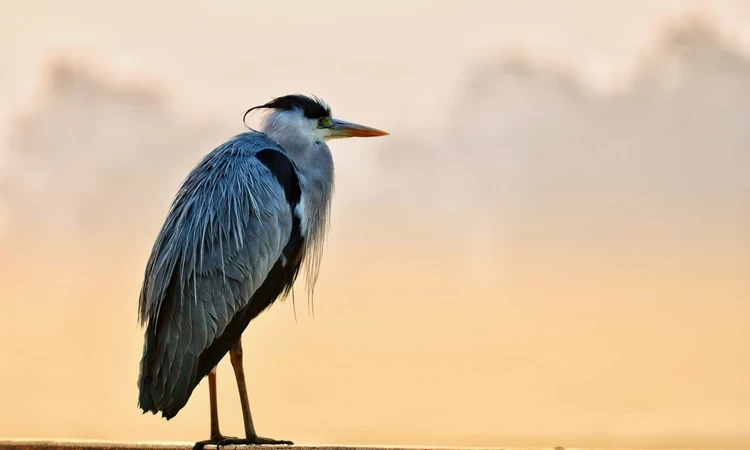
GiGL wildlife sightings
We have partnered with Greenspace Information for Greater London CIC (GiGL), an organisation responsible for the city's environmental records.